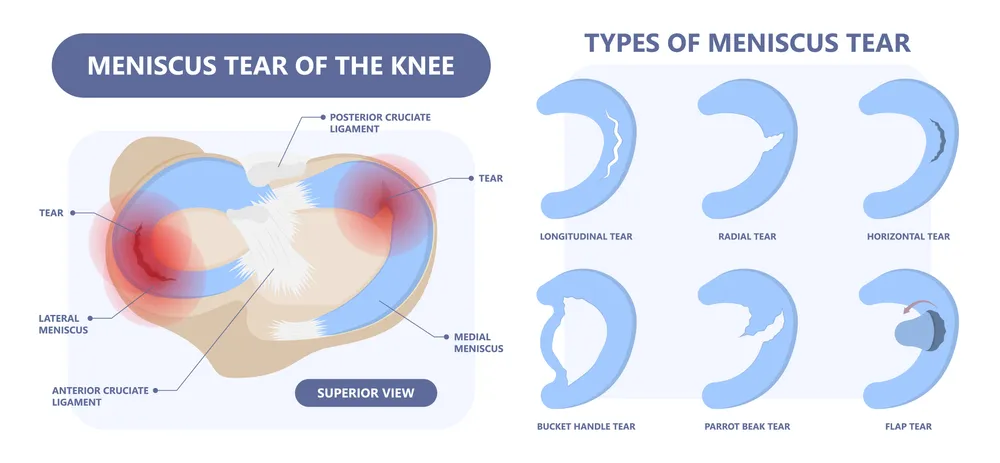
If you love running, you know how frustrating it can be to deal with a knee injury. One of the runners’ most common knee injuries is a torn meniscus, a tear in the cartilage that cushions the knee joint. A torn meniscus can cause pain, swelling, stiffness, and difficulty bending and straightening the knee.
But can you run with a torn meniscus? Should you stop running until it heals? The answer is not so simple, as it depends on several factors, such as the type and severity of the tear, your symptoms, your treatment options, and your goals.
Can you run with a torn meniscus?
The short answer is maybe – but only with extreme caution. The meniscus is a C-shaped piece of cartilage in your knee that acts as a cushion and stabilizer. A torn meniscus can be painful and make daily activities difficult, let alone high-impact exercise like running. However, running may be possible with modifications for some people with small, stable tears and minimal pain.

Why you should avoid running with a torn meniscus
Running is not recommended with a torn meniscus because it can further worsen your injury and damage your cartilage.
When you run, your knees absorb forces up to 3-5 times your body weight with each stride. For someone with a tear in their meniscus, these forces can:
Enlarge the tear
The impact and twisting motions from running can cause a small tear to become larger and more complex.
Cause more damage
Running increases instability in the knee, which then results in more friction and wear on your cartilage.
Increase pain
As the tear worsens and cartilage deteriorates, you’ll likely experience increasing pain and inflammation.
Affect healing
A torn meniscus typically repairs very slowly, if at all. Running can make proper healing even more difficult.
When Running May Be Okay – With Modifications
For some people with tiny, stable tears and minimal symptoms, light, low-impact running may be possible – IF you:
Start slow
Only run/jog for short distances leisurely to see how your knee responds.
Focus on form
Lean slightly and land on your midfoot or forefoot to reduce impact forces.
Use cushioning
Wear shoes with extra cushioning and support to absorb shock.
Take breaks
Run at most every other day. Rest is vital for your knee to recover between runs.
Cross-train
Supplement with low-impact exercises like cycling, elliptical work, and swimming.
Consider PT
Physical therapy or chiropractic treatments may help reduce pain and inflammation, strengthening the muscles around your knee to provide more stability while running.

FAQs
Conclusion
In short, while light running might be possible for some people with a torn meniscus, it’s still likely not advisable. The risks of further damage and setbacks generally outweigh the benefits. Physical therapy, alternative exercises, and even surgery may be better options to help manage your condition and restore mobility – without placing undue stress on your injured knee.

